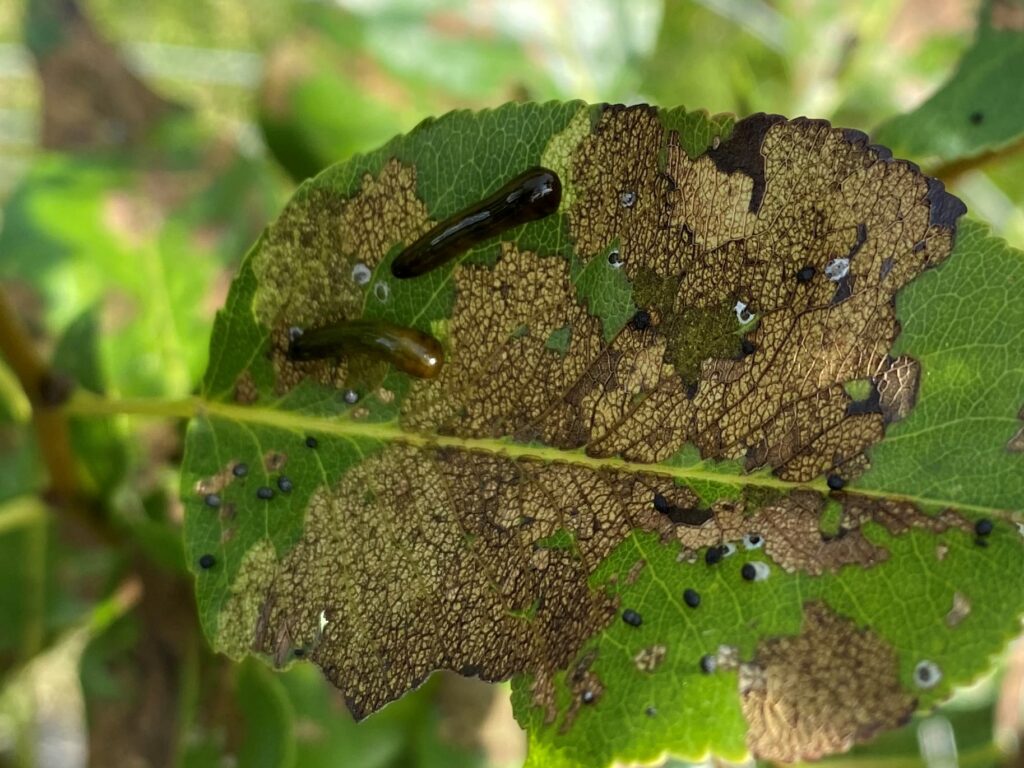Written by: Linda Williams, DNR Forest Health Specialist, Woodruff, Linda.Williams@wisconsin.gov, 920-360-0665.
Pear slug sawflies (Caliroa cerasi) feed by scraping off the upper layer of the leaf, leaving the veins and the lower leaf surface. Severe defoliation has been observed and reported recently on crabapple, apple, mountain ash and serviceberry in Oneida, Forest and Oconto counties. The first generation occurs earlier in the summer, so the larvae and defoliation seen now are due to the second generation of the insect, which is larger than the first generation.

Pear slug sawfly larvae feed by scraping off the upper layers of the leaf. Photo Credit: Wisconsin DNR
These small sawfly larvae are easily controlled with insecticidal soaps and contact insecticides. If you’ve had trouble with high populations this year, watch for the first generation next year in July and treat if you notice defoliation to get it under control before the larger second generation occurs.
